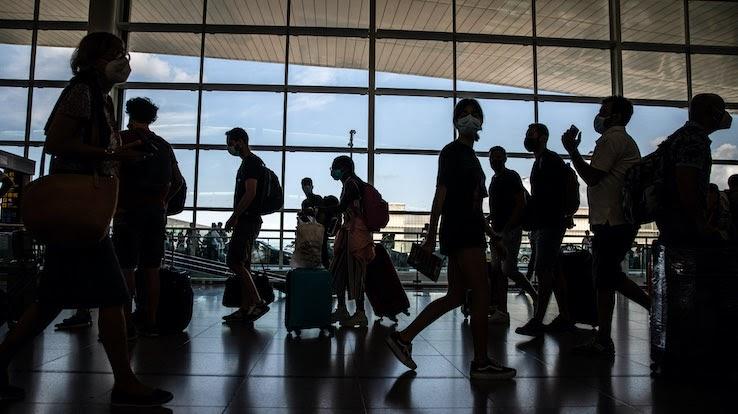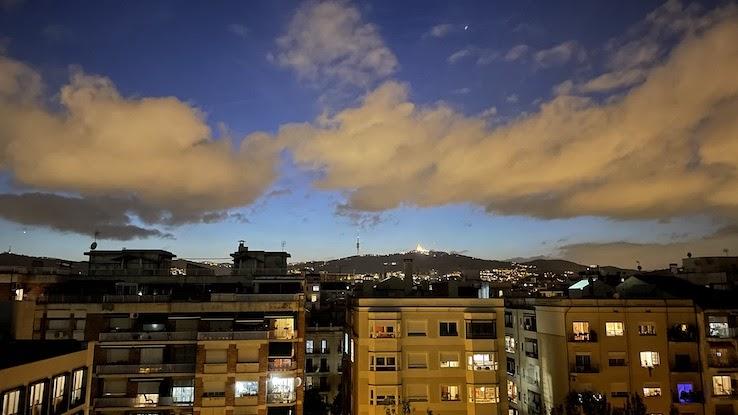How Easy is It to Do a Bank Transfer From the Us to Europe

A few weeks ago, and in preparation for summer travel season, I wrote about all the reasons why I was dreading a possible trip back home to Barcelona. On the one hand, I really longed to see my family and friends, and to walk the streets of my hometown. On the other hand, the whole experience just didn't feel quite right. Especially considering that the Centers for Disease Control and Prevention (CDC) wasn't — and still isn't — exactly recommending international travel to places with a very high level of COVID-19 cases, like Spain and a few other European countries.
I finally visited my home country during the first two weeks of July. Deciding to go wasn't easy but it had been more than two years since my last trip home. Also, I'm fully vaccinated and all of my family and friends were either already fully vaccinated or had at least received the first dose of the COVID-19 vaccine. And even though it wasn't required, I took a rapid NAAT test the day before my trip to ensure I was healthy before leaving.
Getting to Barcelona was a tiresome 22-hour door-to-door affair. The availability of worldwide commercial flights is still down compared to previous years and flying direct was not an option for the dates I chose.
But regardless of the long trip, everything worked out as well as could be expected. I got to San Francisco International Airport (SFO) with the recommended three-hour window of time to spare only to be done with the ordeal of clearing check-in — I needed to show proof of vaccination to enter the European Union — and security in less than 20 minutes. I do have TSA PreCheck. I felt a bit foolish hanging out for three hours at the gate, to be honest. But I much rather that to the stresses of running to catch a flight. The layover in Miami was a breeze, but things started to feel a bit weird when dinner was served on my Miami-to-Barcelona leg of the trip: pretty much everyone unmasked at the same time to eat. The CDC requires passengers to wear a mask that completely covers their noses and mouths while they're inside an airplane or at the airport. But passengers can take their masks off for brief periods while eating and drinking.
I tried to take my mask off to nourish and hydrate only when others weren't doing it and, for the most part, I wore a KN95 mask for the whole 22 hours. But the couple sitting next to me on the plane decided to take their time with dinner and wine — and then some more wine. I did freak out a bit because of my proximity to two unmasked perfect strangers. I wanted to make sure not only to remain healthy myself, but I also didn't want to be the reason my parents, who are in their late sixties, got sick. Thinking that everyone on the plane had had to either take a test or be fully vaccinated got me through the panic. My mask also helped, although I partially blame it for the much shorter-than-usual naps I took on both flights.
Getting into Spain was easy because I have a European passport. But I had also made sure to complete the Health Control Form (FCS), which resulted in me receiving a QR code required by the Spanish authorities in order to get into the country. This is a new procedure implemented during the pandemic. Navigating international travel in the times of COVID-19 can be a bit tricky because most countries have changed their requirements, even for citizens and permanent residents. American Airlines recommended I download the app VeriFLY, which drives you through the process of what specific paperwork and other credentials — such as taking a test — you need when traveling internationally.
Things Haven't Got Back to Normal

Once in Barcelona, everything felt almost normal for a little bit — but it wasn't. Newscasters kept talking about the rise in cases caused by the Delta variant, especially among unvaccinated people. That shaped the way I made a lot of plans. I met my friends from college for ice cream on a sidewalk cafe. We had a chat in a nearby park. I took long walks on the beach with my parents. And I spent a lot of time on my sister's rooftop patio — the views at sunset are great, so no complaints. I was much less social than normal and saw a limited number of people. I did have a couple of meals inside of restaurants but with very small groups — only one or two people — of fully vaccinated friends and family members who aren't part of high-risk groups.
In a city famous for its hot, humid summers, air-conditioned interiors can be very alluring during July and August. Not this time; outdoor activities were the preference. Out of cautiousness, we decided to cancel a restaurant outing with my parents — getting the family together for a nice dinner out has been a family tradition that we missed this time. Instead of that, we had to contend with a home-cooked lobster paella.
But as the date for my flight back to California approached, I started feeling the dread of a pandemic that didn't seem to be anywhere near its end and the fear of not knowing when I'd be able to see my family again. My sister and her partner were planning on visiting during their summer holidays but European Union citizens still can't travel to the U.S. as tourists because of COVID-19 travel restrictions. So I won't be able to see them again this summer. There's chatter about the U.S. easing travel restrictions for fully vaccinated visitors but the date when those changes may take effect is still unknown.
And while processing all that uncertainty, I also needed to deal with the logistics of my trip back to the U.S. As part of the CDC requirements for all passengers arriving in the U.S., I had to take a COVID-19 test — it could actually be an antigen one — no more than three days before my departing flight. I had seen long lines at a couple of the labs in the most touristy area of the city. Fortunately, my family pointed out a place in the neighborhood where there was barely any line. I opted for taking my test two days before my flight. Waiting until the last minute didn't feel right but the two-day window allowed some leeway in case my flight was delayed. I truly don't know what would have happened if that test had come back positive — which, considering the case rate in Spain at the time, was more than a possibility, despite all the precautions I took.
Once again I got to the Barcelona airport with more than three hours to spare, but this time I was glad I did it. Checking in took a long time because the ground crew needed to check not only passports but also COVID-19 tests and the CDC attestation forms that are necessary for re-entry into the U.S. Other than that, there were a lot of security checkpoints and controls along the way, but, in general, I feel airports have improved since I last traveled internationally in November of 2019. Even my two-hour layover in Miami — where I had to clear immigration and customs — was very expedient.
Let me add one last recommendation in case you're planning on traveling internationally: download the Mobile Passport Control app, which was developed by the U.S. Customs and Border Protection (CBP). I didn't get to use it because there were virtually no lines but it's designed so that you can submit your passport and customs declaration information through your phone, streamlining the whole entry process.
Let's hope for a near future in which we can fully savor the joys of international travel — jet lag notwithstanding — once again.
Source: https://www.ask.com/lifestyle/travel-europe-summer-obstacle-course?utm_content=params%3Ao%3D740004%26ad%3DdirN%26qo%3DserpIndex&ueid=912658e7-e1e4-49e0-99c7-c59e88d3e8a7
0 Response to "How Easy is It to Do a Bank Transfer From the Us to Europe"
Post a Comment